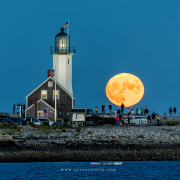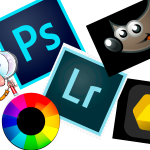Winter: Are you a hibernator or forager?
If you live in areas where cold temperatures, snow, and ice are the components, the very word may invoke distaste, dread, or delight.
Like other mammals, some humans hibernate, while others continue foraging through the winter season.
Which camp are you in?
Foragers keep digging for nuggets. These take the form of learning new camera techniques or elevating post-processing skills. They are the first ones out after a snowfall to shoot a pristine scene, unblemished by footsteps. Hibernators tuck their camera away and remove their photographer hat. They often switch to other interests but the idea of cold fingers on a cold camera makes them mentally shudder.
I am one of those people that love the winter. I love everything about it. The low angle of the sun makes the light “better” for longer hours. The sunrise occurs at a more reasonable hour for a night hound such as myself. The sun sets early so star chasing can begin earlier, so the subsequent bloodshot eyes are greatly diminished. The snow (if we ever have a proper snowfall this year) is a pure delight. Snow offers everything from sweeping landscapes to micro photography. A fresh snowfall changes rapidly so those precious instants we photographers chase is sped up exponentially.
So far, this winter has been dismal all around. Lack of snow and lots of clouds. The nighttime cloud cover has been excessive which has cramped my joy of deep space photography. However, I have compensated by diving into other things.
I continue to forage.
While my winter photography has been thwarted, I’ve been trying out various software for star stacking. I usually use Sequator to stack images. It has the ability to use dark, bias, and flat frames and works very well for both astrolandscape and deep-space images. This is a Windows-only application, however. A similar tool for Mac is Starry Landscape Stacker. Now I am test-driving SiriL, a free open-source program that runs on Windows, Linux, and Mac. At first glance, it appears to be complex and quite daunting. Like most things, with a closer look and a shift in perspective the tool is delightfully easy to use and impressively powerful. This is specifically for deep space photography.
Below, an image of the Pleiades stacked and stretched in SiriL. Nikon Z9 with 80-400mm lens @ 400mm. ISO 500, f/5.6, 30 seconds for each frame. 40 images stacked with 10 dark frames. 20 minutes total exposure time. Tracked with Benro Polaris.

It will stack using only light frames as well as with a full set of light, dark, bias and flat frames. The auto-stretching feature works really well. Usually, anything “auto” leaves much to be desired, but this option in SiriL is slick. When stacking deep space objects in Sequator, the stretching would occur in Photoshop or other software where you can manipulate levels. SiriL gets the image to its final stage much quicker.
I have also been working with RawTherapee, an open source and free RAW processing software. This runs on Windows, Mac, and Linux. Adobe users can think of RawTherapee as Adobe Camera Raw (ACR) or the develop module in Lightroom (which is technically ACR). It can be used as a standalone program or in conjunction with GIMP, another open source tool that works a lot like Photoshop and it is free.
RawTherapee is a fantastic alternative to paid programs. Unlike Adobe Photoshop or Lightroom, RawTherapee uses 32 bit processing. Adobe uses a maximum of 16 bit (things get wonky if you try to use a 32 bit file). The bits refer to the number of possible tonal values available to each color channel (red, green, and blue) of each pixel. The higher the bits, the greater the tonal value available for each color channel. Using the higher bit rate greatly reduces the possibility of posterization while manipulating the histogram, albeit it increases the size of your file. The histogram will show you when posterization is occurring as the graph will show lots of tightly spaced spikes. This resulting choppiness can be seen in an image.
Below, a screenshot of an image being edited in RawTherapee.

A full review on these and other alternatives to Adobe will be forthcoming.
What do you do when the season isn’t one of your favorites for photography? Let’s hear in the comments below.
To learn about upcoming workshops and tips on photography, consider subscribing to my website.
Taking photos and want to make them more compelling?
Art isn’t just for walls. Art is also to hold in one’s hands.
Want to explore New England through a camera lens?
© Silvana Della Cameran


 Silvana Della Camera
Silvana Della Camera
 Silvana Della Camera
Silvana Della Camera

 Silvana Della Camera
Silvana Della Camera


Trackbacks & Pingbacks
[…] Uses 32 bit processing which prevents posterization of an image. More about what this is in this ,post. […]
Leave a Reply
Want to join the discussion?Feel free to contribute!